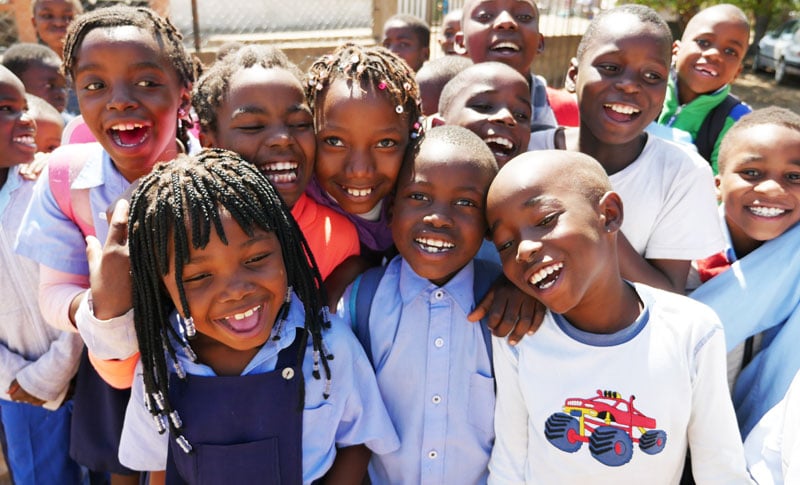9 Signs That Show the Planet is Getting Better

The hardest part about changing the world is believing we can. With all the recent doom and gloom in the news, it's easy to lose hope in the world. However, if you look beyond the stories of terror and violence, you will also find stories of bravery and resilience. Whether it makes the news or not, it's important to remember that every single day, people all over the world are fighting to make this world a better place. And every single day, we are given the choice to join in that fight and believe that change is possible.
Christiana Figueres, former Executive Secretary of the UN Framework Convention on Climate Change, recently gave a Ted Talk in which she stresses the importance of optimism in changing the world. Using a definition of optimism that encompasses "courage, hope, trust, solidarity, and the fundamental belief that we humans can come together and help each other to better the fate of mankind," Figueres talks about how relentless optimism led to tangible improvements in the fate of climate change.
So let's remember that despite the struggles we face on a daily basis, people are coming closer and closer every day to finding solutions to the world's toughest problems. And because of these optimistic leaders of change, we are beginning to see real changes that prove the world is getting better.
1.Extreme poverty rates are declining
At the end of last year, the World Bank released a statement that the number of people living in extreme poverty had fallen below 10 percent for the first time in history. Their estimations placed 9.6 percent of the world's population living in extreme poverty in 2015, down from 12.8 percent of the population in 2012. Since 1990, the global poverty rate has declined by more than half. While there is still a lot of work to do in terms of bringing down these numbers, this progress proves that the possibility of meeting the UN target to end extreme poverty by 2030 is very much within our reach.
 2. World hunger is decreasing
2. World hunger is decreasing
In 2000, the Millennium Development Goals set a target to cut world hunger in half by 2015. Since then, 72 countries have met that goal, with the rest trailing closely behind. Moreover, the amount of undernourished people in developing regions has decreased from 23.3 percent to 12.9 percent of the world's population since 1990, providing real hope for a future free of hunger. In a statement by UN Malawi, FAO Director General Jos Graziano da Silva, he announced "the near achievement of the MDG hunger target shows us that we can indeed eliminate the scourge of hunger in our lifetime."
3. The ozone hole is healing
In 1985, a team of English scientists concluded that chloroflueocarbon (CFC) gasses emitted into the atmosphere had created a hole in the ozone layer. Loss of the protective ozone layer meant a possible increase in rates of skin cancer and posed a dangerous threat to the future of mankind. Just about a week ago, however, scientists released new research suggesting that the hole is finally closing, and has already shrunk by more than 4 million square kilometers. According to lead researcher Susan Solomon, a finding of this magnitude "gives us hope that we shouldn't be afraid to tackle large environmental problems."
4. People are recognizing the problems with fast fashion and doing something about it
The environmental impact of fast fashion, combined with unethical treatment of factory workers, has recently caused many people to think about where we get our clothes. In 2013, following the Rhana Plaza building collapse in Bangladesh, "Fashion Revolution" was created to demand reform and greater transparency in the fashion industry. In 2015, the documentary "The True Cost" revealed the dangers of the fast fashion industry. And in 2016, fast-fashion brand H&M attempted to make changes by aiming to collect 1,000 tons of old clothing during World Recycle Week. Much still needs to happen in terms of creating a greener, more ethical fashion industry. However, people are starting to take notice of the problem and working towards solutions to fix it and that is an incredible first step.

5. More people have access to clean water and sanitation than ever before
For the first time in history, the total number of people without access to improved drinking water has fallen below 700 million. This means that 91 percent of the world population uses an improved drinking water source, compared to 76 percent in 1990. In addition, 2.1 billion people have gained access to improved sanitation facilities. Clean water is crucial to development, and with these rates, we are likely to see 100 percent of the population with access to improved drinking water some time in the near future.
6. Cities are becoming more sustainable
With new technologies and renewable energies on the rise, cities all over the world are finding new ways to become more sustainable. Frankfurt, Germany has been continually reducing carbon emissions by 10 percent every five years. Portland, Oregon implemented a curbside composting program that led to a 38 percent drop in the city's trash output. And Paris, France recently took the first steps towards building a 28-mile bike highway throughout the city.
7. New technologies are allowing us to come up with innovative solutions to old problems
Watching the rate at which technology is advancing can be daunting. However, we have to remember that technology is also allowing innovators everywhere to turn world-changing ideas into reality. Whether it be the straw that filters water, the six-pack rings that feed marine life, or the soccer ball that generates electricity, technology is giving us the tools necessary for solving the worlds toughest problems
 8. We're coming closer to global, universal education
8. We're coming closer to global, universal education
Last year, UNESCO put out a report stating that in the last 15 years, the number of children without access to an education has dropped from 100 million to 57 million. To put that in perspective, these numbers mean that 9 out of every 10 children are now learning to read and write. According to the World Bank, we are only one generation away from a universally literate world.
9. Countries all over the world are making the shift to renewable energy
The Paris Agreement, signed in December, brought 195 countries together to reduce greenhouse gas emissions and save the environment. While this may sound like an impossible task, countries all over the world are already making huge strides towards a sustainable future. In 2015, Costa Rica achieved 99 percent of its electricity generation from renewable energy, Sweden aimed to become one of the world's first countries to go 100 percent fossil free, and Denmark produced 42 percent of its electricity from wind. If the world continues on this path, 2016 is sure to bring us even closer to a future where 100 percent of the globe is generated by renewable energy.
